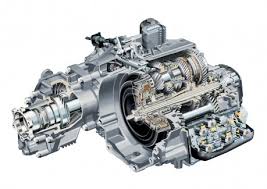Mobile:+86-311-808-126-83
Email:info@ydcastings.com
Aluminium Casting Heat Treatment - Process and Benefits
Heat Treatment of Aluminium Castings Enhancing Performance and Durability
Aluminium casting is a widely utilized process in various industries due to its lightweight nature and excellent mechanical properties
. However, to optimize the performance of aluminium castings, heat treatment is a crucial step that can significantly improve their strength, ductility, and overall durability.Heat treatment involves a series of controlled heating and cooling processes that alter the microstructure of the aluminium alloy. Common heat treatment processes for aluminium castings include solution treatment, aging, and annealing. Each process plays a distinct role in enhancing the material properties of the casting.
Solution Treatment is the first step in the heat treatment process. This involves heating the aluminium casting to a high temperature, typically between 480°C and 550°C, depending on the alloy. The high temperatures allow the alloying elements, such as copper, silicon, or magnesium, to dissolve into the aluminium matrix. This phase homogenizes the microstructure and prepares the alloy for subsequent aging.
After solution treatment, aging is employed to improve strength through precipitation hardening. The casting is cooled and then held at a lower temperature, usually between 160°C and 200°C, for a specified duration. This aging process allows fine precipitates to form within the aluminium matrix, which act as obstacles to dislocation movement. As a result, the casting exhibits enhanced yield strength and hardness, making it more suitable for demanding applications.
aluminium casting heat treatment

In some cases, annealing may be used to relieve internal stresses that develop during the casting process. This involves heating the casting to a moderate temperature and then cooling it slowly. Annealing helps to reduce brittleness and improve ductility, ensuring that the casting can withstand bending and deformation without fracturing.
The effectiveness of heat treatment in enhancing aluminium castings cannot be overstated. Improved mechanical properties lead to better performance in applications ranging from automotive components to aerospace parts. Moreover, the fatigue resistance of heat-treated aluminium castings is significantly greater, making them more reliable in critical applications.
It is essential to note that the specific heat treatment process may vary based on the type of aluminium alloy and the intended use of the casting. Proper control of temperature, time, and cooling rates is crucial to achieving the desired properties without compromising the integrity of the material.
In conclusion, heat treatment is a vital step in the processing of aluminium castings, allowing manufacturers to tailor the material properties to meet specific application requirements. As industries continue to demand higher performance materials, the role of heat treatment in enhancing aluminium castings will remain paramount, ensuring the longevity and reliability of components across various sectors.
-
Understanding Metal Casting TechniquesNewsApr.02,2025
-
Understanding Exhaust Manifolds for Enhanced Engine PerformanceNewsApr.02,2025
-
The World of Metal FabricationNewsApr.02,2025
-
Key Components for Pump and Turbo EfficiencyNewsApr.02,2025
-
Essential Tools for Automotive Maintenance and RepairNewsApr.02,2025
-
Durable Valve Components for Effective Water ManagementNewsApr.02,2025











